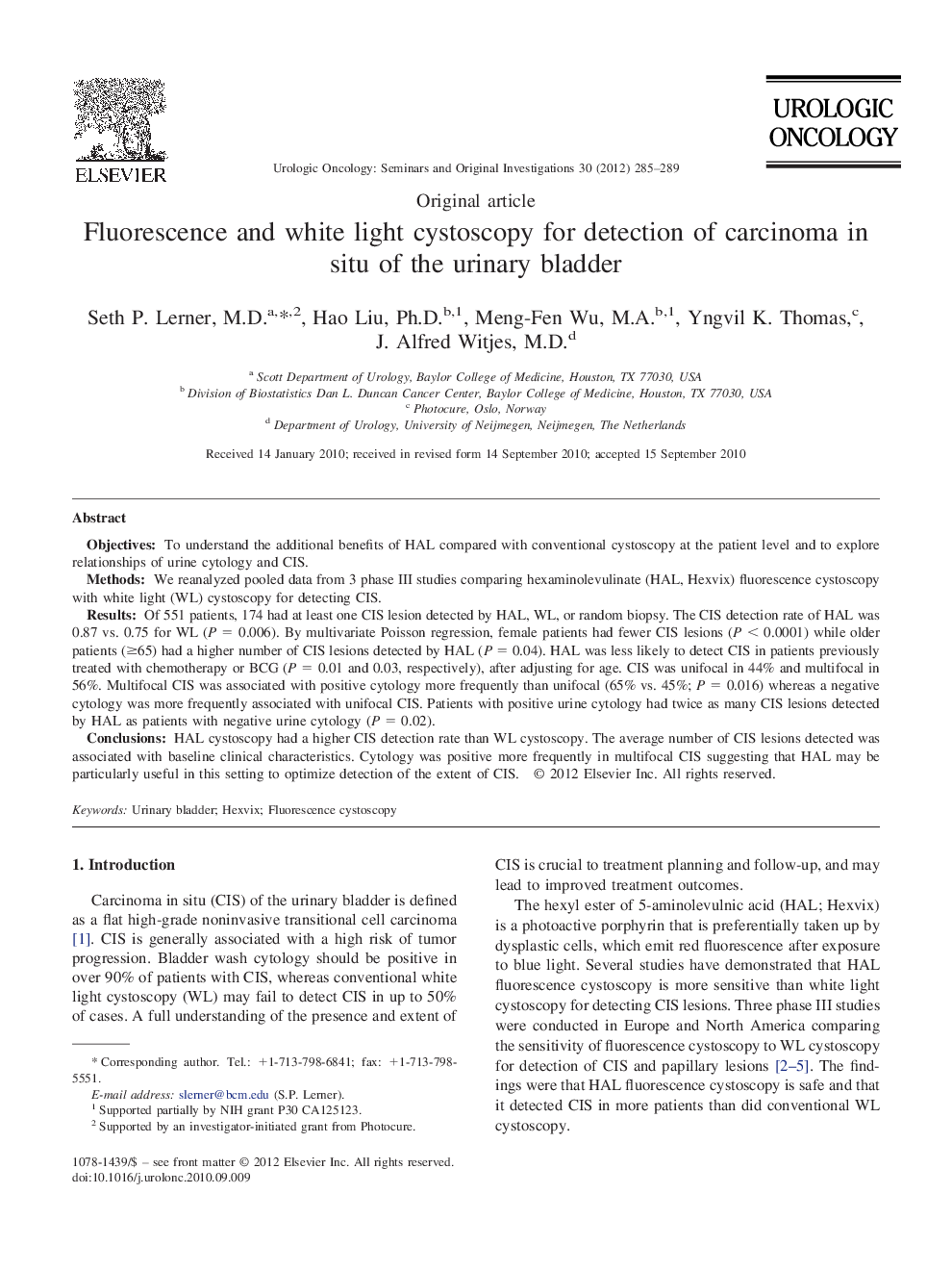| Article ID | Journal | Published Year | Pages | File Type |
|---|---|---|---|---|
| 4000268 | Urologic Oncology: Seminars and Original Investigations | 2012 | 5 Pages |
ObjectivesTo understand the additional benefits of HAL compared with conventional cystoscopy at the patient level and to explore relationships of urine cytology and CIS.MethodsWe reanalyzed pooled data from 3 phase III studies comparing hexaminolevulinate (HAL, Hexvix) fluorescence cystoscopy with white light (WL) cystoscopy for detecting CIS.ResultsOf 551 patients, 174 had at least one CIS lesion detected by HAL, WL, or random biopsy. The CIS detection rate of HAL was 0.87 vs. 0.75 for WL (P = 0.006). By multivariate Poisson regression, female patients had fewer CIS lesions (P < 0.0001) while older patients (≥65) had a higher number of CIS lesions detected by HAL (P = 0.04). HAL was less likely to detect CIS in patients previously treated with chemotherapy or BCG (P = 0.01 and 0.03, respectively), after adjusting for age. CIS was unifocal in 44% and multifocal in 56%. Multifocal CIS was associated with positive cytology more frequently than unifocal (65% vs. 45%; P = 0.016) whereas a negative cytology was more frequently associated with unifocal CIS. Patients with positive urine cytology had twice as many CIS lesions detected by HAL as patients with negative urine cytology (P = 0.02).ConclusionsHAL cystoscopy had a higher CIS detection rate than WL cystoscopy. The average number of CIS lesions detected was associated with baseline clinical characteristics. Cytology was positive more frequently in multifocal CIS suggesting that HAL may be particularly useful in this setting to optimize detection of the extent of CIS.
